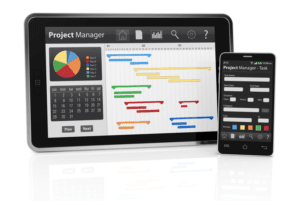Content
- Current Vs. Quick Ratio
- Your current liabilities (also called short-term obligations or short-term debt) are:
- Join over 140,000 fellow entrepreneurs who receive expert advice for their small business finances
- How do you calculate the current ratio?
- How do you calculate current ratio?
- Part 2: Your Current Nest Egg
- What is net asset value (NAV)?

In theory, the higher the current ratio, the more capable a company is of paying its obligations because it has a larger proportion of short-term asset value relative to the value of its short-term liabilities. However, because the current ratio at any one time is just a snapshot, it is usually not a complete representation of a company’s short-term liquidity or longer-term solvency. The current ratio measures a company’s ability to pay current, or short-term, liabilities (debts and payables) with its current, or short-term, assets, such as cash, inventory, and receivables. The current ratio alone will not likely be sufficient to assess a company’s short-term liquidity, for example.
Dividing your total current assets by your total current liabilities determines how much of your current liabilities can be covered by your current assets. You’ll want to consider the current ratio if you’re investing in a company. When a company’s current ratio is relatively low, it’s a sign that the company may not be able to pay off its short-term debt when it comes due, which could hurt its credit ratings or even lead to bankruptcy.
Current Vs. Quick Ratio
The interpretation of the current ratio should also consider the industry in which the company operates, as different industries have varying norms for acceptable current ratios. Like most performance measures, it should be taken along with other factors for well-rounded decision-making. A current ratio going down could mean that the company is picking up new or bigger debts. Again, analysts and investors should investigate the cause to determine whether the company is a good investment.
- Creditors would consider the company a financial risk because it might not be able to easily pay down its short-term obligations.
- The current liabilities, on the other hand, include wages, accounts payable, short-term debts, taxes payable, and the current portion of long-term debt.
- To estimate the credibility of Mama’s Burger, the bank wants to analyze its current financial situation.
- Your cash is tied up in lots of things, like inventory, payment transfers, assets, and more.
- Businesses must also plan for solvency, which is the company’s ability to generate future cash inflows.
- All such information is provided solely for convenience purposes only and all users thereof should be guided accordingly.
Current ratio is a measurement of a company’s ability to pay back its short-term obligations and liabilities. In general, a current ratio of 2 means that a company’s current assets are two times higher than its current liabilities and is considered healthy. A current ratio of 1, meaning that a company’s assets and liabilities are equal, is considered acceptable. Anything lower indicates that a company would not be able to pay its obligations. Therefore, the current ratio measures a company’s short-term liquidity with respect to its available assets. Current ratios measure the ability of a company to pay its short-term or current liabilities (debts and payables) with its short-term or current assets, such as cash, inventory, and receivables.
Your current liabilities (also called short-term obligations or short-term debt) are:
These are future expenses that have been paid in advance that haven’t yet been used up or expired. Generally, prepaid expenses that will be used up within one year are initially reported on the balance sheet as a current asset. As the amount expires, the current asset is reduced and the amount of the reduction is reported as an expense on the income statement.
- The current ratio for Food & Hangout outlets is 2, which means they have enough current assets to pay back their current liabilities.
- The average is computed using the same formula as the accounts receivable turnover ratio above.
- The business currently has a current ratio of 2, meaning it can easily settle each dollar on loan or accounts payable twice.
- XYZ Company had the following figures extracted from its books of accounts.
- At Finance Strategists, we partner with financial experts to ensure the accuracy of our financial content.
- The current ratio formula is an essential tool to evaluate whether a company’s liquid assets are sufficient to settle its obligations.
The current ratio measures a company’s short-term liquidity with respect to its available assets. It measures the ability of a company to pay its short-term or current liabilities (debts and payables) with its short-term or current assets, like cash, inventory, and receivables. The cash asset ratio, or cash ratio, also is similar to the current ratio, but it only compares a company’s marketable securities and cash to its current liabilities. The current ratio is a liquidity ratio that evaluates the ability of a company to pay its short-term or current liabilities with its short-term or current assets.
Join over 140,000 fellow entrepreneurs who receive expert advice for their small business finances
The cash flow statement reports the cash inflows and cash outflows for a month or year. While the current ratio at any given time is important, analysts and investors should also consider how the number has changed over time. That could show how the company is changing and what trajectory it is on.
So, whether you’re reading an article or a review, you can trust that you’re getting credible and dependable information. The investment information provided in this table is for informational and general educational purposes only and should not be construed as investment or financial advice. Bankrate does not offer advisory or brokerage services, nor does it provide individualized recommendations or personalized investment advice. Investment decisions should be based on an evaluation of your own personal financial situation, needs, risk tolerance and investment objectives.
A current ratio that is in line with the industry average or slightly higher is generally considered acceptable. A current ratio that is lower than the industry average may indicate a higher risk of distress or default. Similarly, if a company has a very high current ratio compared with its peer group, it indicates that management may not be using its assets efficiently. That being said, how good a current ratio is depends on the type of company you’re talking about. It might be very common in certain industries to have current ratios lower than 1. Supermarkets, for instance, tend to operate at current ratios below 1 because they have few trade receivables, have a high level of trade payables, and have tight cash control.

If this is the case, the company has more than enough cash to meet its liabilities while using its capital effectively. What makes the current ratio more valuable still is its expression over time. Current ratios can fluctuate year on year for a variety of reasons, and a low current ratio may not accurately reflect the value of a company. However, a current ratio that consistently decreases over time may be of concern to potential investors.
How do you calculate the current ratio?
Particularly interesting may be the return on equity calculator and the return on assets calculator. Be sure also to visit the Sortino ratio calculator that indicates the return of an investment considering its risk. If you are curious to know the components of short-term assets and short-term liabilities, you should read our articles on Current calculating current ratio Assets and Current Liabilities. A financial professional will offer guidance based on the information provided and offer a no-obligation call to better understand your situation. Our mission is to empower readers with the most factual and reliable financial information possible to help them make informed decisions for their individual needs.
A ratio greater than 1 means that the company has sufficient current assets to pay off short-term liabilities. Similar to the current ratio, a company that has a quick ratio of more than one is usually considered https://www.bookstime.com/articles/cpa-cost-and-fees less of a financial risk than a company that has a quick ratio of less than one. Current assets (also called short-term assets) are cash or any other asset that will be converted to cash within one year.
